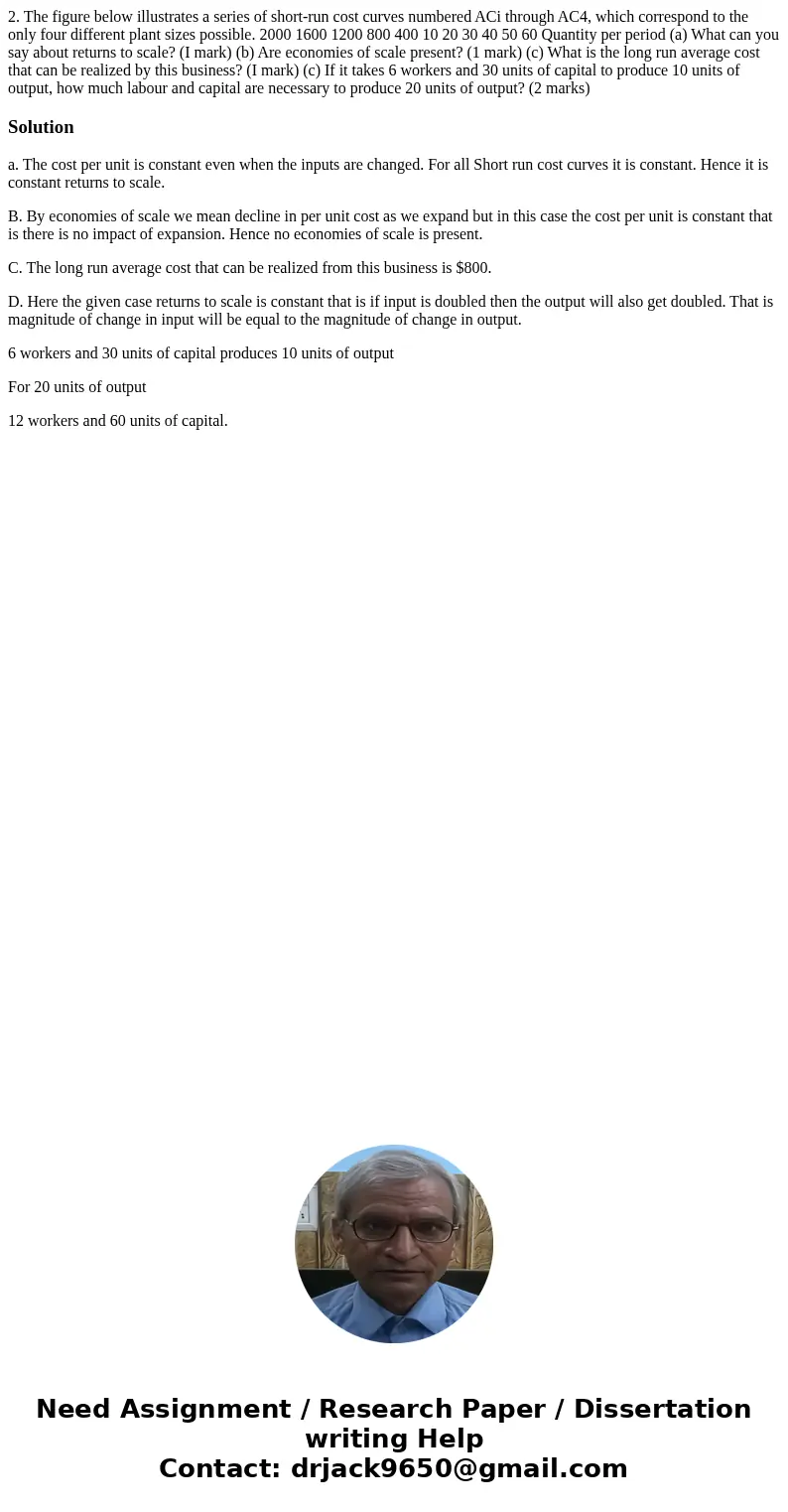2 The figure below illustrates a series of shortrun cost cur
Solution
a. The cost per unit is constant even when the inputs are changed. For all Short run cost curves it is constant. Hence it is constant returns to scale.
B. By economies of scale we mean decline in per unit cost as we expand but in this case the cost per unit is constant that is there is no impact of expansion. Hence no economies of scale is present.
C. The long run average cost that can be realized from this business is $800.
D. Here the given case returns to scale is constant that is if input is doubled then the output will also get doubled. That is magnitude of change in input will be equal to the magnitude of change in output.
6 workers and 30 units of capital produces 10 units of output
For 20 units of output
12 workers and 60 units of capital.

 Homework Sourse
Homework Sourse